Abstract
Of 88 cases of extrahepatic biliary atresia, satisfactory bile flow has been established in 46% of the patients who have undergone portoenterostomies and in 25% of patients with hepaticojejunostomies. Histological analysis of the extrahepatic biliary tissue has not shown a consistent correlation with outcome of operation, except that the patients with one or two large residual ducts lined with columnar epithelium have a better chance of developing bile flow. Cholangitis developed in 43% of the cases, and co-trimoxazole was not shown to have any beneficial effect in a small prospective trial in 18 patients. Severe haemorrhage from oesophageal varices has occurred in 4 jaundice-free survivors. Seventeen patients are now over 3 years of age and thriving but many show persistent elevation of liver enzymes.
Full text
PDF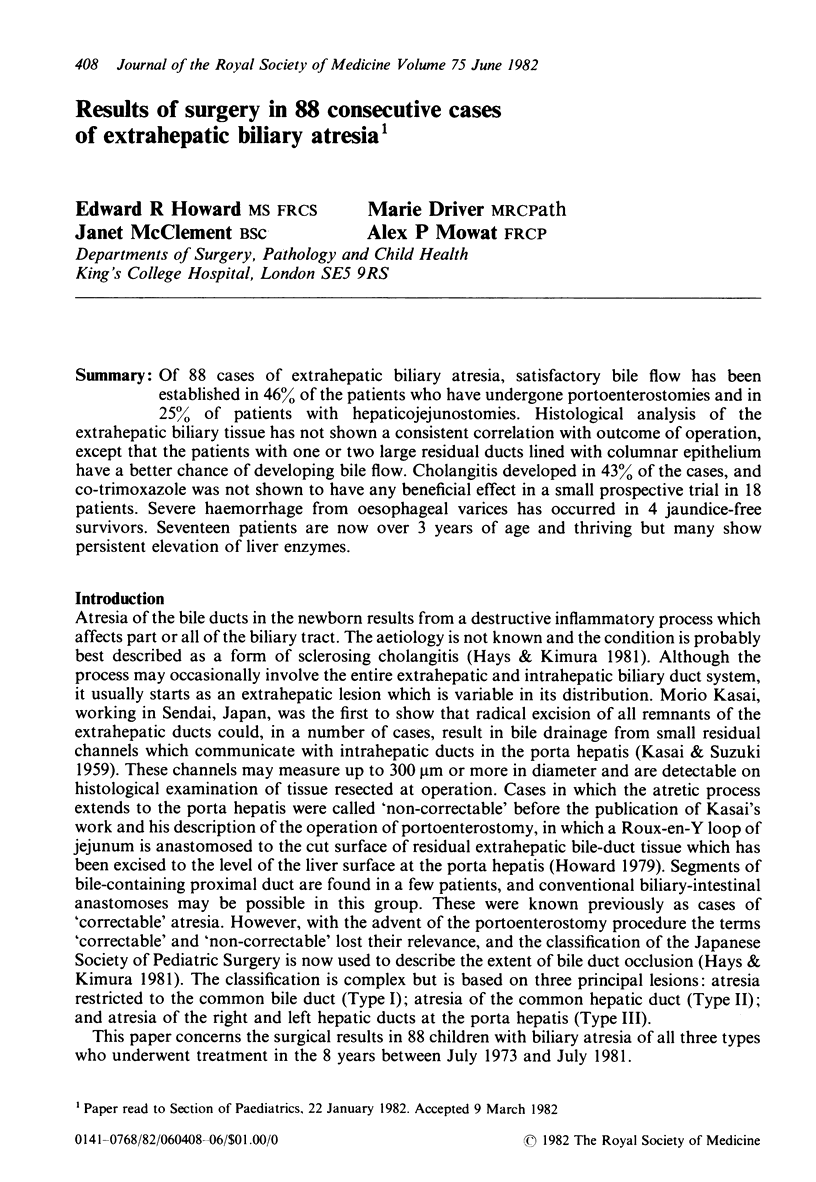
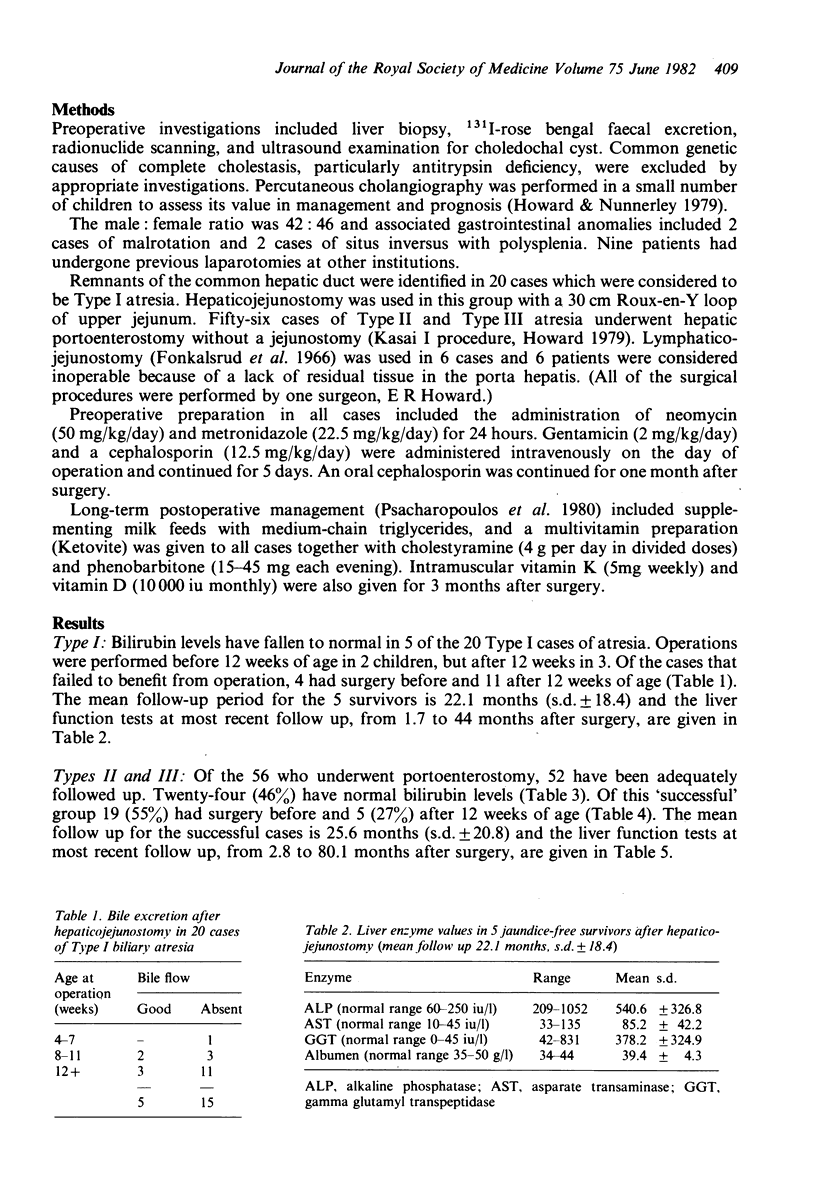
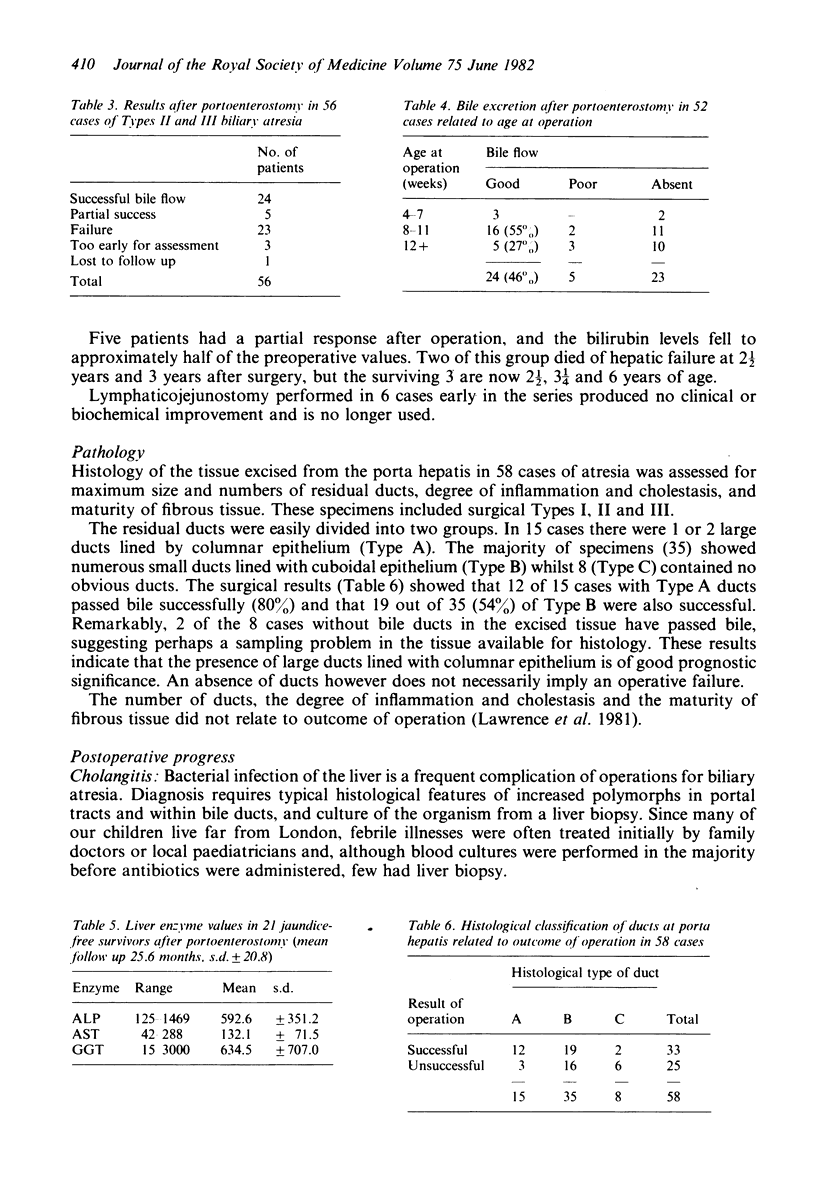
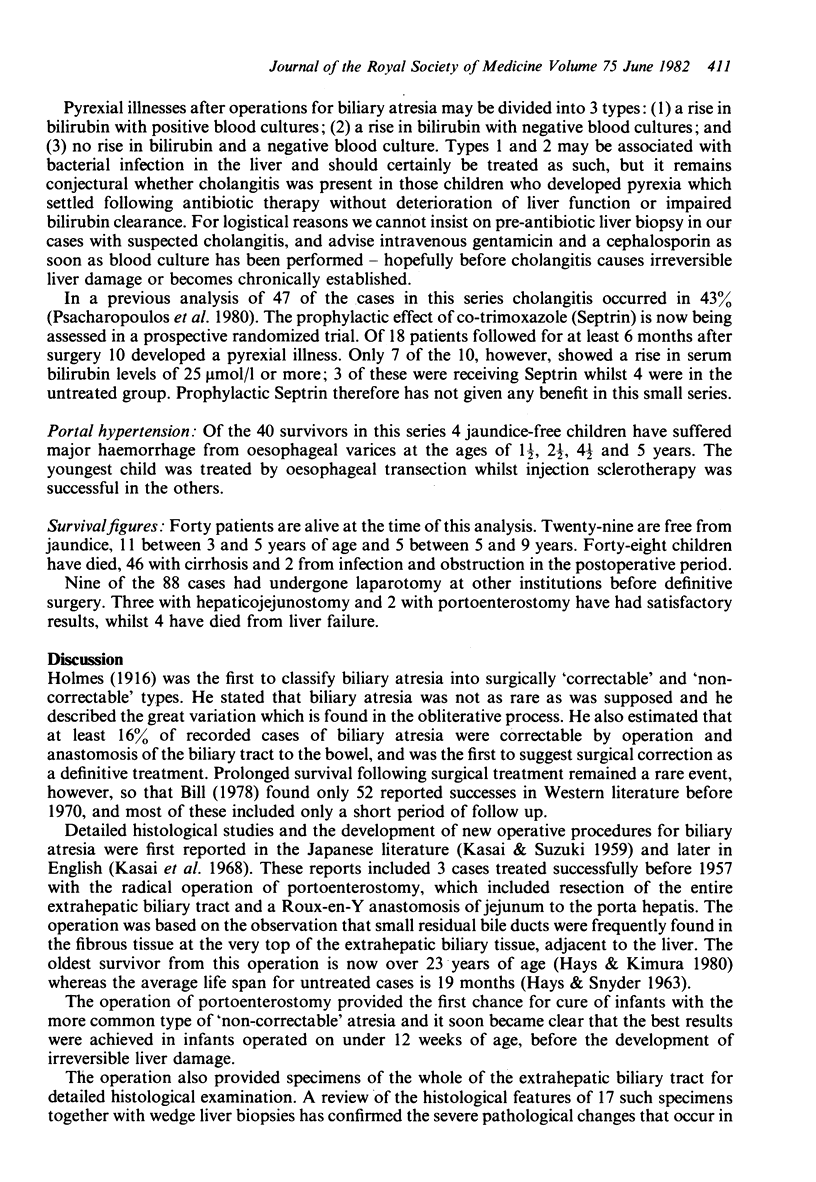
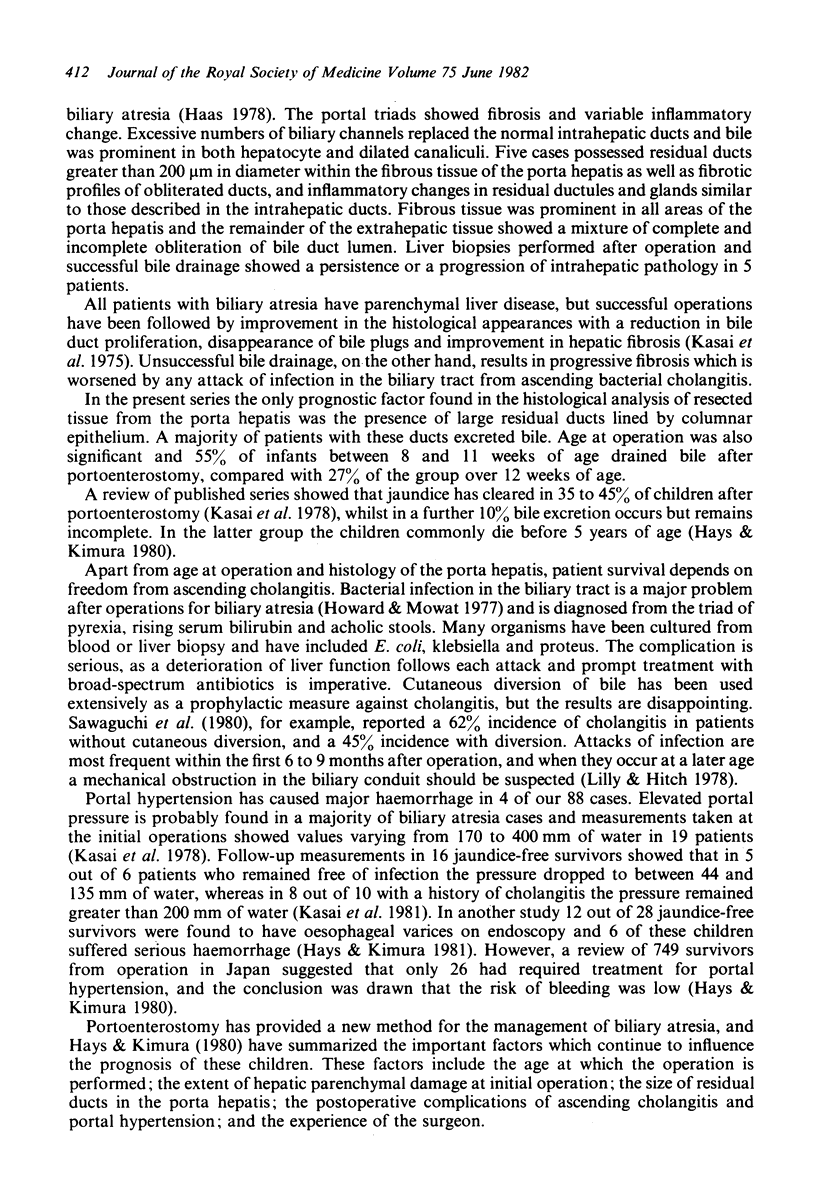
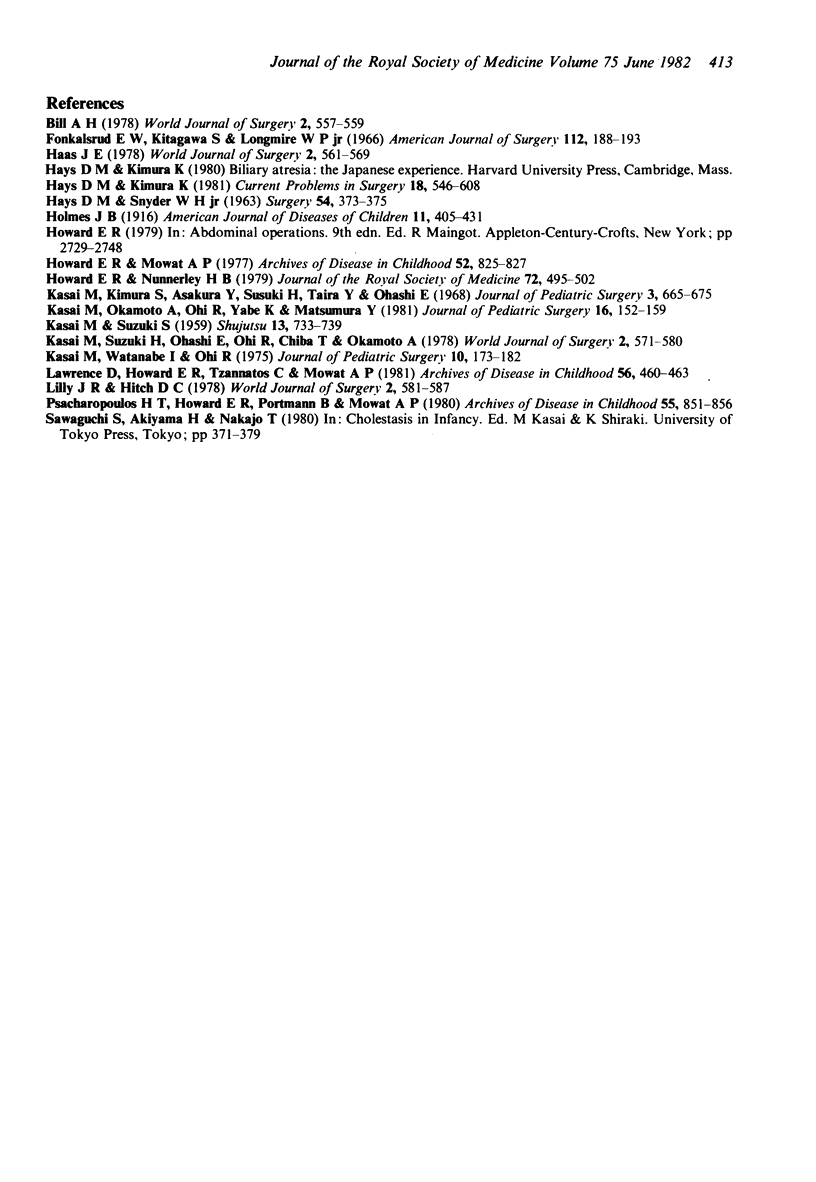
Selected References
These references are in PubMed. This may not be the complete list of references from this article.
- Bill A. H. Biliary atresia--introduction. World J Surg. 1978 Sep;2(5):557–559. doi: 10.1007/BF01556046. [DOI] [PubMed] [Google Scholar]
- Fonkalsrud E. W., Kitagawa S., Longmire W. P., Jr Hepatic lymphatic drainage to the jejunum for congenital biliary atresia. Am J Surg. 1966 Aug;112(2):188–194. doi: 10.1016/0002-9610(66)90008-0. [DOI] [PubMed] [Google Scholar]
- HAYS D. M., SNYDER W. H., Jr LIFE-SPAN IN UNTREATED BILIARY ATRESIA. Surgery. 1963 Aug;54:373–375. [PubMed] [Google Scholar]
- Haas J. E. Bile duct and liver pathology in biliary atresia. World J Surg. 1978 Sep;2(5):561–569. doi: 10.1007/BF01556047. [DOI] [PubMed] [Google Scholar]
- Hays D. M., Kimura K. Biliary atresia: new concepts of management. Curr Probl Surg. 1981 Sep;18(9):541–608. doi: 10.1016/s0011-3840(81)80016-0. [DOI] [PubMed] [Google Scholar]
- Howard E. R., Mowat A. P. Extrahepatic biliary atresia. Recent developments in management. Arch Dis Child. 1977 Nov;52(11):825–827. doi: 10.1136/adc.52.11.825. [DOI] [PMC free article] [PubMed] [Google Scholar]
- Howard E. R., Nunnerley H. B. Percutaneous cholangiography in prolonged jaundice of childhood. J R Soc Med. 1979 Jul;72(7):495–502. doi: 10.1177/014107687907200707. [DOI] [PMC free article] [PubMed] [Google Scholar]
- Kasai M., Okamoto A., Ohi R., Yabe K., Matsumura Y. Changes of portal vein pressure and intrahepatic blood vessels after surgery for biliary atresia. J Pediatr Surg. 1981 Apr;16(2):152–159. doi: 10.1016/s0022-3468(81)80342-9. [DOI] [PubMed] [Google Scholar]
- Kasai M., Suzuki H., Ohashi E., Ohi R., Chiba T., Okamoto A. Technique and results of operative management of biliary atresia. World J Surg. 1978 Sep;2(5):571–579. doi: 10.1007/BF01556048. [DOI] [PubMed] [Google Scholar]
- Kasai M., Watanabe I., Ohi R. Follow-up studies of long term survivors after hepatic portoenterostomy for "noncorrectible" biliary atresia. J Pediatr Surg. 1975 Apr;10(2):173–182. doi: 10.1016/0022-3468(75)90275-4. [DOI] [PubMed] [Google Scholar]
- Lawrence D., Howard E. R., Tzannatos C., Mowat A. P. Hepatic portoenterostomy for biliary atresia. A comparative study of histology and prognosis after surgery. Arch Dis Child. 1981 Jun;56(6):460–463. doi: 10.1136/adc.56.6.460. [DOI] [PMC free article] [PubMed] [Google Scholar]
- Lilly J. R., Hitch D. C. Postoperative ascending cholangitis following portoenterostomy for biliary atresia: measures for control. World J Surg. 1978 Sep;2(5):581–585. doi: 10.1007/BF01556050. [DOI] [PubMed] [Google Scholar]
- Psacharopoulos H. T., Howard E. R., Portmann B., Mowat A. P. Extrahepatic biliary atresia: preoperative assessment and surgical results in 47 consecutive cases. Arch Dis Child. 1980 Nov;55(11):851–856. doi: 10.1136/adc.55.11.851. [DOI] [PMC free article] [PubMed] [Google Scholar]


